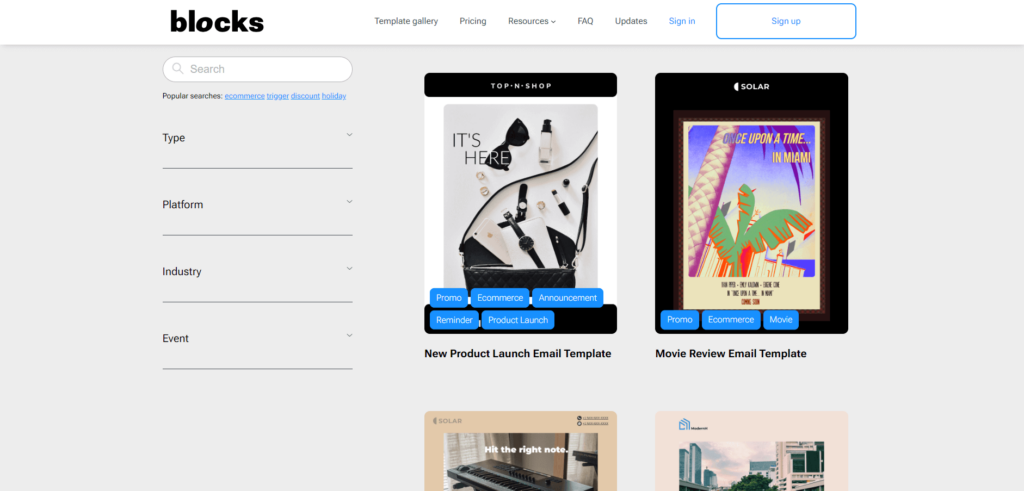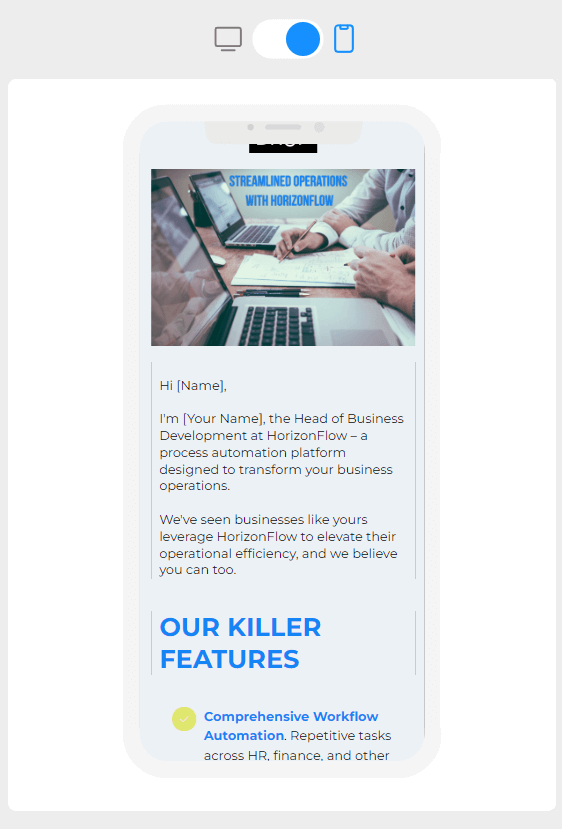Irresistible Proposal Email Templates for Business Success
In today’s digital age, proposal emails have become instrumental in driving sales, advancing partnerships, and forging business relationships. They act as the first line of communication, often defining your first impression. A well-crafted business proposal email template can not only grab the recipient’s attention but also convince them of your product’s or service’s value.
This article aims to provide you with actionable tips and insights to create an outstanding proposal email template using Blocks.
The Significance of Proposal Emails
Proposal emails are more than just a letter of introduction. They are your opportunity to stand out, demonstrate your understanding of the client’s needs, and showcase your solution. In different sectors, from technology to marketing, proposal emails function as an essential tool in initiating business conversations and, ultimately, closing deals.
Understanding Your Audience
A powerful proposal email template isn’t one-size-fits-all. It’s a tailored message that resonates with the recipient’s industry, needs, and preferences. Start by researching your recipient: know their role, their organization, and the challenges they face. This will allow you to craft a personalized, relevant proposal email template, thereby increasing the chance of a positive response.
Looking for an effective tool to create Proposal emails?
Give Blocks a try for free today
Key Elements of an Effective Proposal Email Template
Crafting an impactful business email template requires careful consideration of each element. Here are the key components that you should integrate:
- Clear Subject Line: Your subject line is the doorway to your proposal. Make it compelling and informative. For instance, “New Collaboration Proposal from XYZ Company” is clear and piques interest.
- Personalized Greeting: Personalization fosters a connection. Instead of a generic “Dear Sir/Madam,” use the recipient’s name, like “Dear Mr. Smith.”
- Compelling Introduction: The first few lines of your email set the tone. Aim to engage and intrigue. For example, “I was intrigued by your recent interview on industry trends, and I believe our solution aligns with your vision.”
- Detailed Proposal: This is the core of your email. Detail your offering, making it relatable to the recipient’s needs. Illustrate how your solution addresses their challenges with examples or case studies. Keep your email template formal and free of unnecessary information.
- Strong Conclusion: Summarize your proposal and emphasize its benefits. For example, “Our solution not only addresses your current challenges but also positions you to lead future industry trends.”
- Call-to-Action: Direct your recipient on the next steps. It could be setting up a call, trying a product demo, or even visiting your website for more information.
Creating a Proposal Email Template with Blocks
Blocks simplifies the process of crafting professional business email templates. Here’s how you can utilize it:
- Start with a template. Blocks offers a variety of pre-made templates. Choose one that aligns with your needs and start customizing.

- Personalize your email. With the drag-and-drop feature, add elements like text boxes, images, or buttons. Customize each to reflect your brand and proposal’s purpose.
- Include visuals. Blocks allows you to integrate images or infographics. Use this feature to enhance your proposal’s appeal and clarity.

- Make use of dynamic content. Blocks enables you to personalize content using dynamic content. Simply add the dynamic code to make your proposal more relevant and personalized.
- Preview and test. Before sending out, preview your email and send test emails to ensure everything appears as intended.
Best Practices for Proposal Emails
To further enhance the effectiveness of your formal email templates, consider these best practices:
- Proofread: Errors can undermine your credibility. Always proofread your email or use a tool to spot and correct grammatical errors.
- Follow up: Don’t wait indefinitely for a response. Plan a follow-up email or call to reiterate your proposal and address any questions.
- Measure success: Use analytic tools to track key metrics like open rates, click rates, and responses. Use these insights to refine your future business emails.
- Maintain professionalism: Use a professional tone, language, and layout. Even in less formal industries, a professional formal email template commands respect and attention.
- Keep it concise: While it’s essential to provide detailed information, ensure your proposal email is concise and easy to digest. Break down complex ideas into simpler terms or bullet points.
Conclusion
Creating an impressive business proposal email template doesn’t have to be a daunting task. With the right structure, a focus on the recipient, and a powerful tool like Blocks, you can craft a proposal email that leaves an indelible impression.
Boost your Proposal templates with Blocks!
Sign up now to craft your effective Proposal email templates!